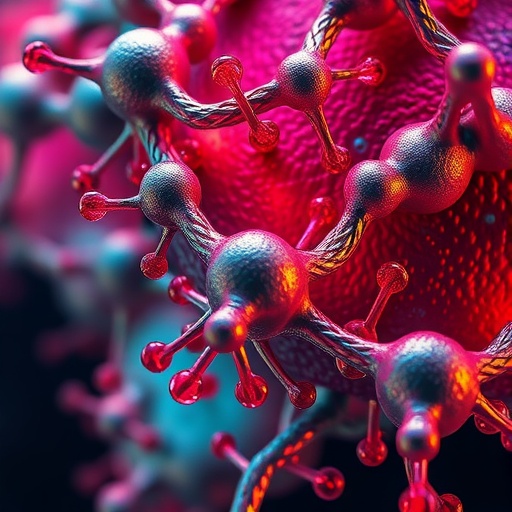In recent years, the exponential rise in industrial activities has led to unprecedented levels of environmental pollution, particularly from heavy metals. This pollution poses severe risks to human health and biodiversity, making the quest for effective remediation strategies increasingly urgent. A compelling study recently published in International Microbiology sheds light on the potential role of air-isolated bacteria in tackling this pressing issue.
The research presents a novel exploration of bacteria that possess the unique ability to resist high concentrations of heavy metals, particularly chromium. Chromium, a heavy metal widely used in various industrial applications, is known for its toxicity and persistence in the environment. The bioavailability of chromium increases its potential for harm, as it can contaminate water sources and accumulate in living organisms, leading to a plethora of health issues, including cancer and organ damage.
In their investigation, the researchers isolated various bacterial strains from air samples gathered in industrial areas. The primary aim was to identify bacterial species that could thrive in environments with high levels of heavy metals. Through rigorous biochemical assays, researchers were able to assess the heavy metal resistance capabilities of these isolated strains, leading to groundbreaking findings on their potential for bioremediation.
One of the fascinating outcomes of the study revealed that certain strains exhibited remarkable tolerance to chromium, enabling them to survive and flourish even in its presence. This resilience opens exciting avenues for using these bacteria in bioremediation applications, potentially enabling the detoxification of chromium-contaminated environments. Such applications could be a game changer in restoring polluted ecosystems while also mitigating risks to human populations living in proximity to industrial zones.
Furthermore, this research highlighted the mechanisms underlying the resistance exhibited by these bacteria. Through a combination of genetic studies and metabolic profiling, scientists ascertained that specific genes play a crucial role in conferring heavy metal resistance. Understanding these genetic pathways could pave the way for biotechnological applications, where selective breeding or genetic engineering could enhance these traits, making bioremediation processes more efficient.
It’s also essential to consider the broader implications of this study within the context of environmental conservation and public health. Heavy metal contamination not only threatens ecosystems but also poses substantial economic burdens due to the costs associated with health care and environmental cleanup. By leveraging naturally occurring bacteria for bioremediation, societies could reduce such costs substantially while promoting healthier environments.
The researchers acknowledge the limitations of their study, particularly the need for further field testing to understand the practicality and effectiveness of using these bacteria for large-scale remediation. While laboratory results are promising, real-world applications often present unique challenges that require comprehensive evaluation. Continuous research is essential to assess the viability of deploying these bacteria in diverse environmental contexts.
Engaging with the scientific community and fostering collaboration among researchers, industry, and policymakers will be critical as the findings from this study are disseminated. Open dialogue can spur innovation, inspiring new strategies that integrate microbial solutions into existing waste management practices.
This study serves as a vital reminder of the interconnectedness of industrial practices, environment, and public health. The potential of air-isolated bacteria as a natural resource for bioremediation exemplifies how science can uncover solutions to urgent global challenges. It calls upon scientists to further explore microbial life as an ally in the battle against environmental degradation and to harness their potency effectively.
As concern around heavy metal contamination continues to grow, the implications of this research extend far beyond academia. The broader public must also engage with these findings, fostering a culture of awareness about environmental health and sustainability. Educational initiatives can empower individuals to advocate for greener practices and support those industries adopting bio-based solutions for pollution management.
In conclusion, the authors of this study have opened a vital research avenue that investigates the potential of bacteria in combating heavy metal pollution. However, while the findings are promising, they also serve as a clarion call for continued exploration in this burgeoning field. Through innovative research and collaborative efforts, there remains a glimmer of hope for curbing the impacts of heavy metal contamination and promoting a sustainable future.
Investing in further studies, fostering interdisciplinary collaborations, and leveraging technological advancements in genetic engineering could be key steps in realizing the full potential of these bacteria. The goal remains clear: to forge pathways for cleaner environments and healthier societies, ushering in a new era where nature and technology harmoniously coexist in the face of industrial challenges.
As we strive to build a more sustainable future, let us remember that solutions may lie right under our nose—in the intricate world of microbiology, waiting to be unveiled and harnessed for the greater good.
Subject of Research: The role of air-isolated bacteria in heavy metal resistance and chromium reduction.
Article Title: Resistance to heavy metals and chromium reduction by bacteria isolated from air.
Article References:
B.G., GF., M.A., LS., O.A., PS. et al. Resistance to heavy metals and chromium reduction by bacteria isolated from air.
Int Microbiol (2025). https://doi.org/10.1007/s10123-025-00716-w
Image Credits: AI Generated
DOI: https://doi.org/10.1007/s10123-025-00716-w
Keywords: Heavy metals, chromium, bioremediation, bacteria, environmental pollution, air-isolation, microbial resistance, ecosystem restoration.
Tags: air-isolated bacteria in bioremediationbacterial resistance to heavy metalsbacterial strains for environmental cleanupbioremediation strategies for heavy metal pollutionchromium reduction in bacteriacontamination of water sources by chromiumenvironmental impact of heavy metalshealth risks of heavy metal exposureheavy metal toxicity and biodiversityindustrial pollution and human healthinnovative research on bacterial remediationtoxic effects of chromium in organisms





